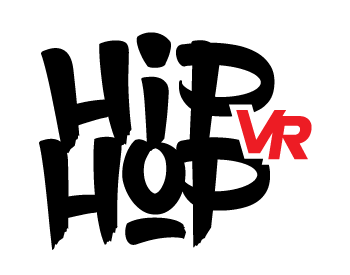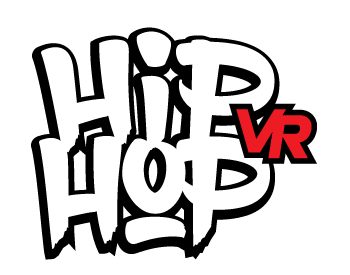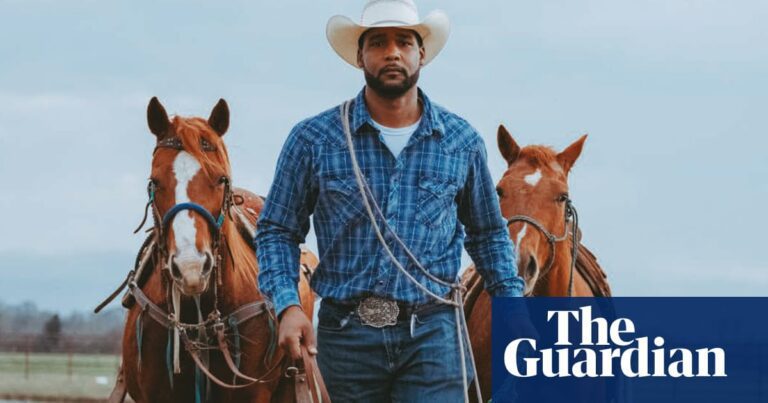FIvan McClellan was a man who worked frequently with horses, but he was not a rider. “The last thing I got back was that I was sitting on the horse like a sack of potatoes,” he said. “I’m a big guy, too, so people always put me on their biggest horse, some kind of giant dinosaur horse. Falling from that high is devastating, so I’m nervous. The horses know I’m nervous. I still have a lot of work to do.”
Since McClellan first attended the Roy LeBlanc Invitational Black Rodeo Super Bowl in Okmulgee, Oklahoma in 2015, the American photographer’s name has become an icon of the country’s black cowboy culture. synonym.
“This is a culture I know nothing about,” McClellan said. “I see young men riding horses naked, wearing diamond earrings, gold chains and Jordans. I see women with braids and long nails riding 50 miles an hour. People frying chicken, barbecuing, Dancing…gospel, R&B and hip-hop were in the air. It was an incredible, extraordinary experience.”
Finding this subject and being fascinated by it has been the most rewarding artistic journey of my life
For McClellan, who grew up in Kansas City but moved to Portland, Ore., in 2011, black cowboy culture provided the sense of community he had been lacking. “I saw all these black people who were cool, a fusion of hip-hop, street style, cowboys — which I grew up loving — all rolled into one,” he said. “I felt like I belonged. It changed my life. Finding this subject and becoming obsessed with it was the most rewarding artistic journey of my life. I made lifelong friendships that have become part of my identity.”
McClellan’s fascination took him to events across the United States from Nevada to Tennessee. His photos are included in his new book, “Eight Seconds: Black Cowboy Culture,” named after the raging bulls that bull riders must ride on to have a legitimate riding experience. However, not everyone is happy that the white denim archetype has been destroyed. “I got a mysterious call the other day from someone saying, ‘Hey, is this a monkey rodeo? I want to open a hacking booth,'” McLennan said. “I have to ignore the hatred that’s brewing because there are ten times as many people who are offended by talking about black cowboys and black rodeo.”
As Charles Sampson, the first African-American cowboy to win a professional rodeo world championship, writes in the book’s introduction, the history of black cowboys has been “almost forgotten.” Western legends like Bass Reeves, Bill Pickett, Stagecoach Mary and Nat Love have been left out of movies and history books. “
“I think it’s a combination of laziness and marketability,” McClellan said. “The purpose of the Hollywood machine is to get people to go to movie theaters. I love Westerns. The archetype of the noble white cowboy is what I love. I just wanted to expand on that and say there’s more going on.”
McLennan, 41, began photographing weddings, fashion and street photography before immersing himself in black cowboy culture. He spends his time primarily between photography and his full-time job as an Adobe Lightroom photography software designer.
He also became a rodeo owner, organizing the inaugural 8 Seconds Juneteenth Rodeo in Portland in 2023, which will return this summer. By conducting events like this, he hopes to encourage support for black cowboy culture, which he believes is dwindling across the country. “It has a very difficult future,” he said. “It’s very expensive to go onto a ranch or work in the livestock industry, and when there are 35,000 black people in the United States and participating in Western culture, you see less and less black people every year. I have a sense of urgency. Losing that culture is going to be a A tragedy.”
Ivan McClellan’s Eight Seconds: Black Athletic Culture is published by Damiani (£40).
Another Country: Five Images from Ivan McClellan’s Eight Seconds
Keary Hines, Texas Prairie Landscape, 2021 (main image, top)
“Hines is a calf roper. Like many black cowboys, he has struggled to maintain his lifestyle and compete at the level he wants. He is the definition of cowboy cool, with his head held high and his shoulders hanging with a rope and two horses under his complete control.”
Pony Express, Okmulgee, OK, 2021
“I took this photo at the arena, standing on the dirt. These two riders were competing in an event called the Pony Express, which is a relay race on horseback around the arena. ” McClellan said. “I was so close in this photo that I was a little nervous. The photo was blurry and technically confusing, but it ended up being the cover of my book because it had so much energy.”
Cowboy Prayer, Okmulgee, Oklahoma, 2020
“This is a Pony Express team called Southside. The beauty of the Okmulgee Rodeo is that it starts at sunset, so the lighting is perfect the whole time. In this photo, the sky is interesting – the sun The mountains had just set and there was a pink mist. The riders were about to set off for the race, all on horseback, holding hands and praying for safety. Pony Express is a dangerous sport, so this prayer was really serious for them. “
Ja’Dayia Kursh, Oklahoma, 2021
“This is a cowgirl named Ja’Dayia Kursh. She has a little dirt on her knees, the only sign that she just fell off a horse. I love her swagger. And her energy. I love that she still poses like a rodeo queen even though she just did something really bad.”
Dentes and Flowers, Okmulgee, Oklahoma, 2020
“Dantes is the one standing and Floss is the one on horseback. They are father and son, part of a Pony Express team called the Country Boyz. I attend the rodeo every year at this exact time and place. Meet them at the show. This is where they park their horses, saddle up their horses, and get ready to race.”


